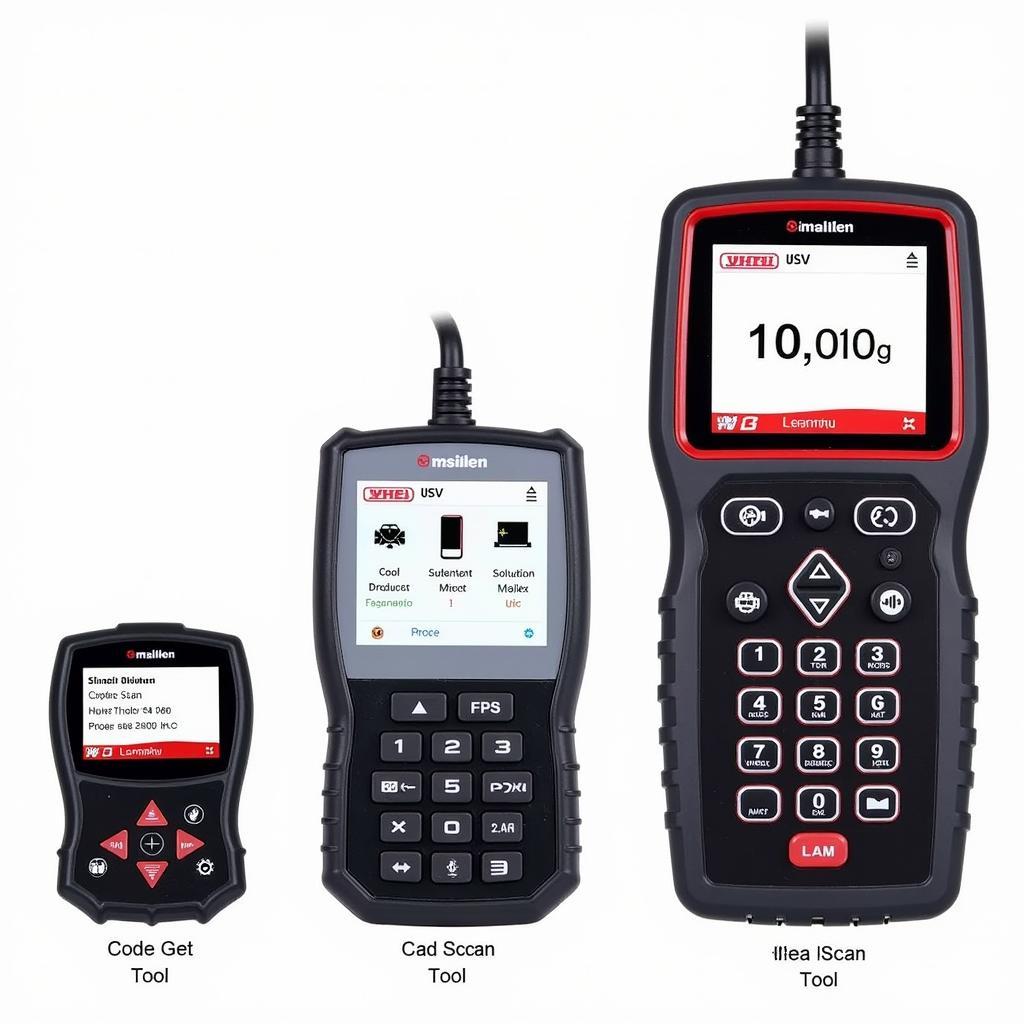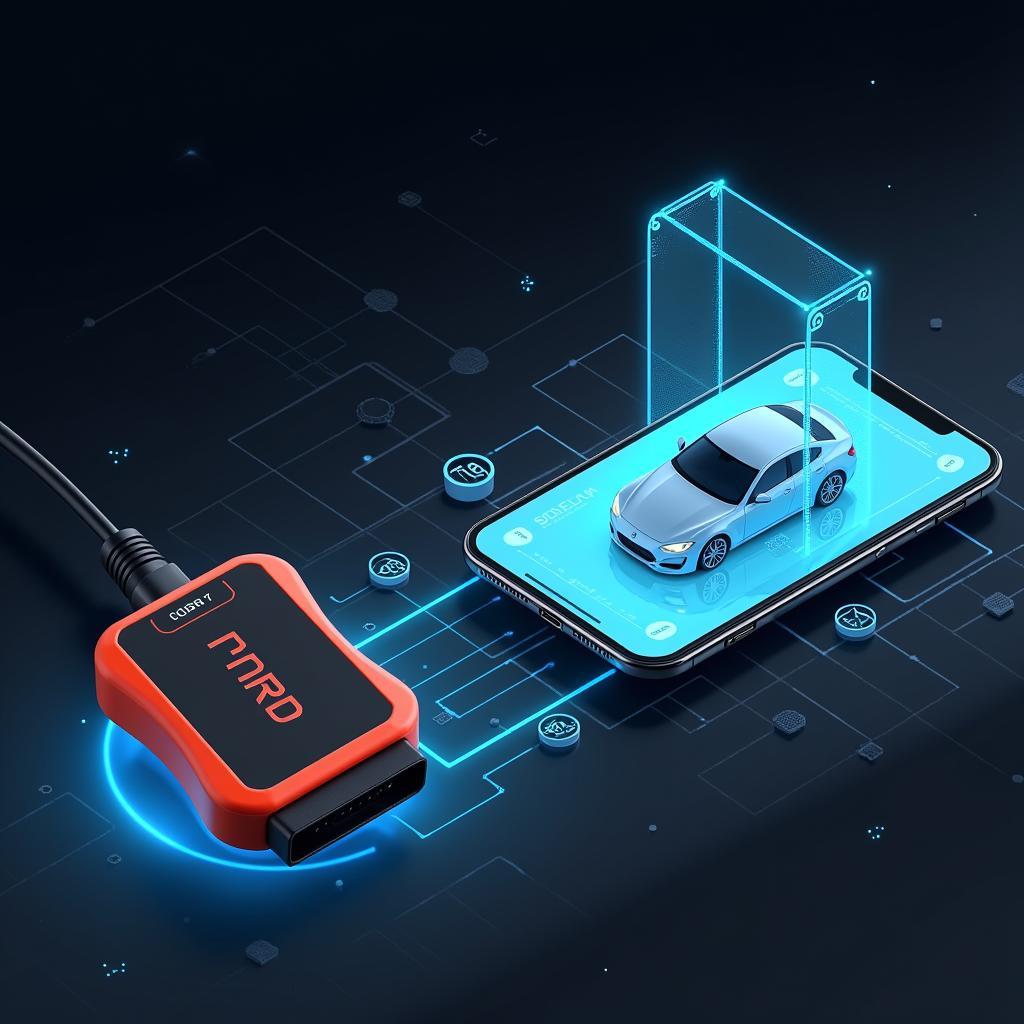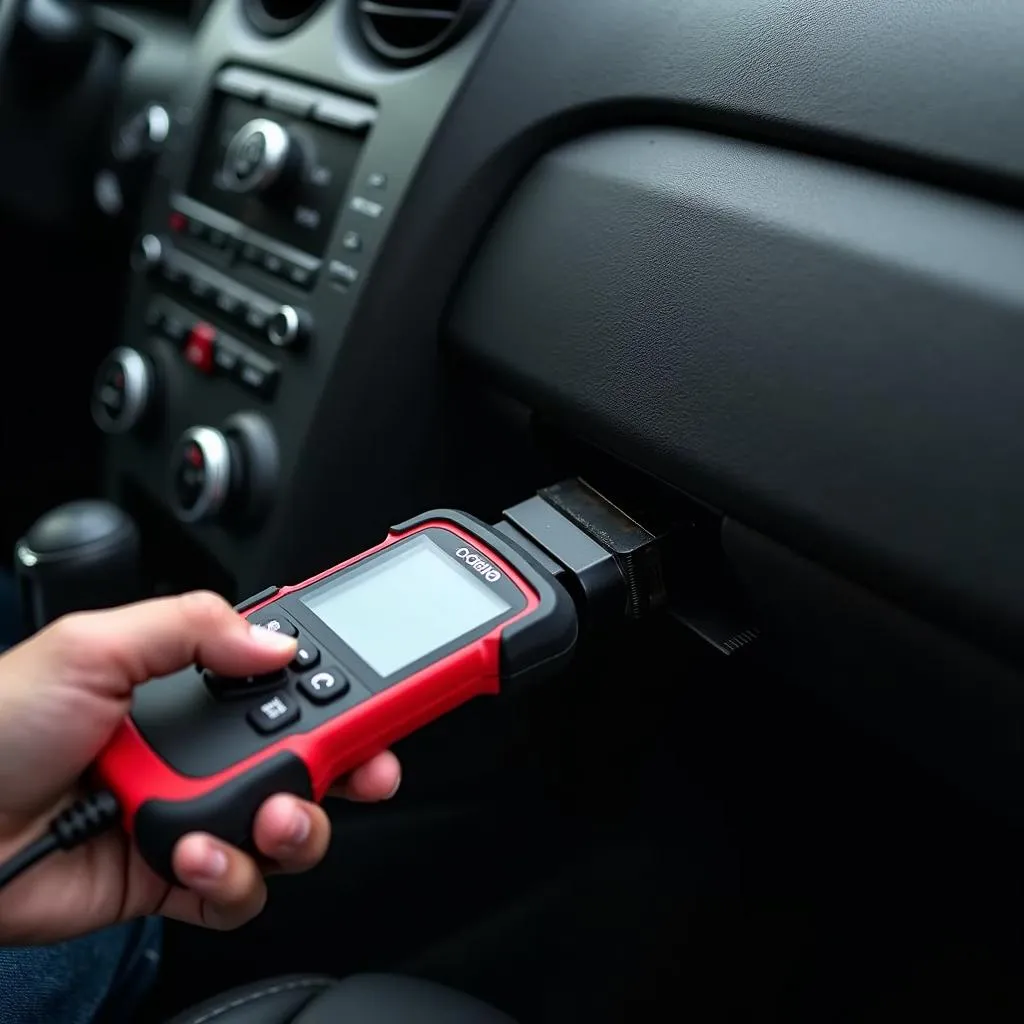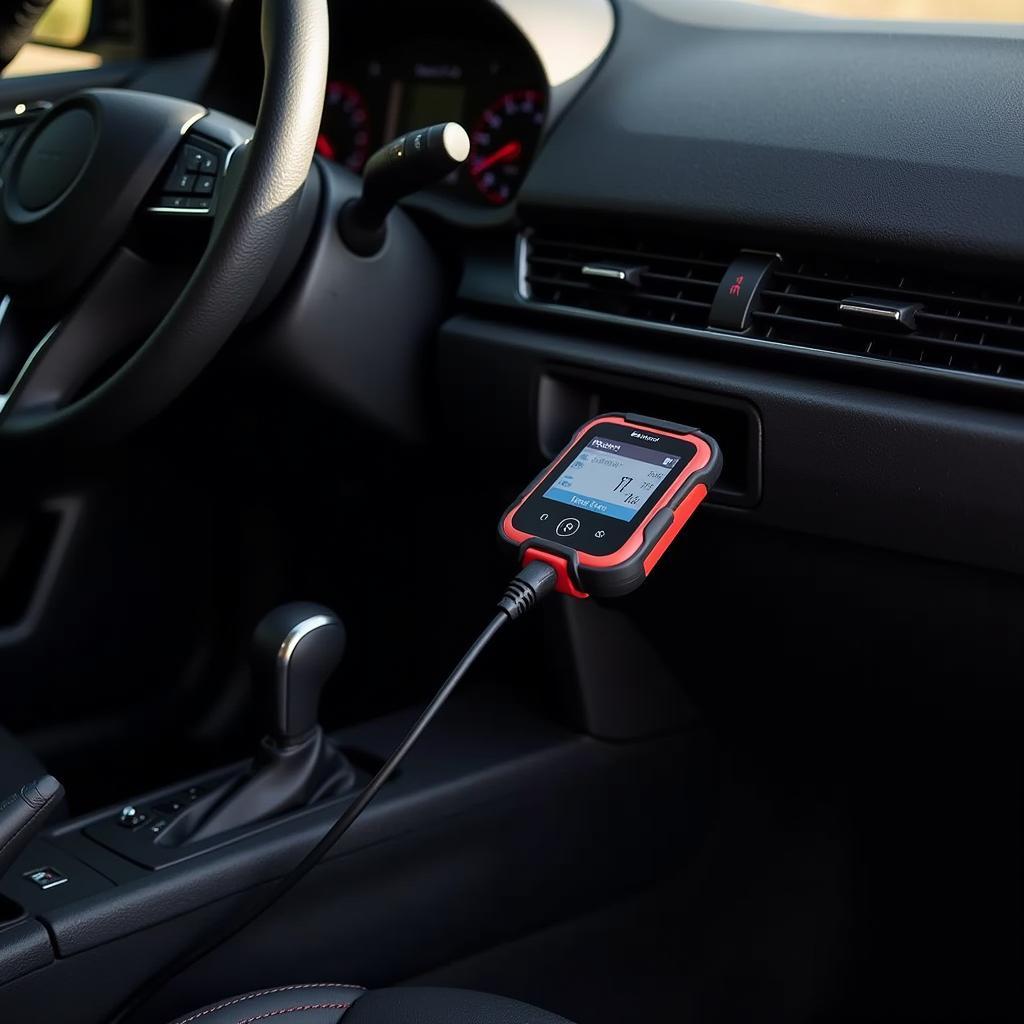Choosing The Best Obd Scan Tool can feel overwhelming with so many options available. This guide will help car owners, repair shop managers, and technicians navigate the complexities and find the perfect tool for their needs. We’ll explore everything from basic code readers to advanced professional-grade diagnostic systems.
Are you a car enthusiast looking to understand your vehicle better? Or perhaps a professional mechanic needing a reliable diagnostic tool? Whatever your need, finding the best OBD scan tool can save you time, money, and frustration. Check out our guide to the best low cost obd ii scan tool.
What is an OBD Scan Tool and Why Do I Need One?
An OBD (On-Board Diagnostics) scan tool is a device that connects to your vehicle’s OBD-II port, typically located under the dashboard. It communicates with the car’s computer, retrieving diagnostic trouble codes (DTCs), which indicate potential problems. These codes can range from simple issues like a loose gas cap to more complex problems like transmission malfunctions. Having an OBD scan tool empowers you to understand these codes and potentially fix minor issues yourself, saving you a trip to the mechanic.
 OBD Scan Tool Connected to Car
OBD Scan Tool Connected to Car
Types of OBD Scan Tools: From Basic to Advanced
OBD scan tools come in a wide range, from simple code readers to sophisticated professional-grade systems. Choosing the right one depends on your needs and budget. Basic code readers are perfect for DIY enthusiasts who want to diagnose simple issues. These tools typically display the DTC and its definition. For more advanced users, there are scan tools that can display live data, allowing you to monitor various sensor readings in real time. Professional-grade scan tools offer even more functionality, including bi-directional control, which allows you to activate various components to test their functionality. You might want to check out our review of the bluetooth odb2 scan tool review.
Choosing the Best OBD Scan Tool for Your Needs
Selecting the right OBD scan tool requires considering several factors. Think about the types of vehicles you’ll be working on. Some scan tools are designed for specific makes and models, offering more in-depth diagnostics. Your budget also plays a crucial role. Basic code readers are affordable, while professional-grade tools come with a higher price tag. Lastly, consider the features you need. Do you need live data streaming? Bi-directional control? Identifying your requirements will help you narrow down the choices.
 Different Types of OBD Scan Tools
Different Types of OBD Scan Tools
What are the Key Features to Look For?
When choosing the best OBD scan tool, certain features stand out as essential. Code reading and clearing are fundamental. Live data streaming is invaluable for monitoring sensor readings and identifying intermittent problems. ABS and SRS (airbag) system diagnostics are crucial for safety-related issues. Data logging capabilities allow you to record data over time, which can be helpful for diagnosing complex problems.
Understanding OBD Scan Tool Compatibility
Not all OBD scan tools are created equal. Ensure compatibility with your vehicle’s make, model, and year. While most vehicles manufactured after 1996 are OBD-II compliant, there can be variations in protocols. Researching compatibility beforehand can save you headaches down the line. You can find information about compatibility on the manufacturer’s website or in the scan tool’s documentation.
How to Use an OBD Scan Tool
Using an OBD scan tool is relatively straightforward. Locate the OBD-II port, usually under the dashboard. Plug the scan tool into the port and turn the ignition on. The scan tool will power up and connect to the vehicle’s computer. Select the desired function, such as reading codes or viewing live data. Follow the on-screen instructions to navigate the menu and interpret the results. Learn more about the craftsman obd2 scan tool.
The Future of OBD Scan Tools
Technology is constantly evolving, and OBD scan tools are no exception. We can expect to see more advanced features, including wireless connectivity, cloud-based diagnostics, and integration with other automotive systems. These advancements will further enhance the diagnostic capabilities of OBD scan tools, making them even more valuable for car owners and professionals alike. Find out more about the best obdii bluetooth scan tool.
“The evolution of OBD scan tools is truly remarkable,” says automotive diagnostics expert, John Miller. “From simple code readers to sophisticated diagnostic platforms, these tools have become indispensable for anyone working on modern vehicles.”
Conclusion
Finding the best OBD scan tool is an investment in your vehicle’s health and your peace of mind. By understanding the different types of scan tools, their features, and how to use them, you can empower yourself to diagnose and potentially fix car problems. Whether you’re a car enthusiast or a professional mechanic, the right OBD scan tool can be an invaluable asset. For any questions or assistance, please contact ScanToolUS at +1 (641) 206-8880. Our office is located at 1615 S Laramie Ave, Cicero, IL 60804, USA.
 Future of OBD Scan Tools
Future of OBD Scan Tools
FAQ
- What does OBD stand for? OBD stands for On-Board Diagnostics.
- Where is the OBD-II port located? It’s usually under the dashboard, on the driver’s side.
- Can I fix my car with an OBD scan tool? An OBD scan tool helps diagnose problems; some minor issues can be fixed with the insights provided.
- Are all OBD scan tools compatible with all cars? No, check compatibility before purchasing.
- What is a DTC? A DTC, or Diagnostic Trouble Code, is a code indicating a potential problem in the vehicle.
- Do I need a professional-grade scan tool? It depends on your needs. Basic code readers suffice for simple diagnostics.
- How often should I use an OBD scan tool? Periodic checks can help identify potential issues early on. You can also check out the obd scan tool actron.


